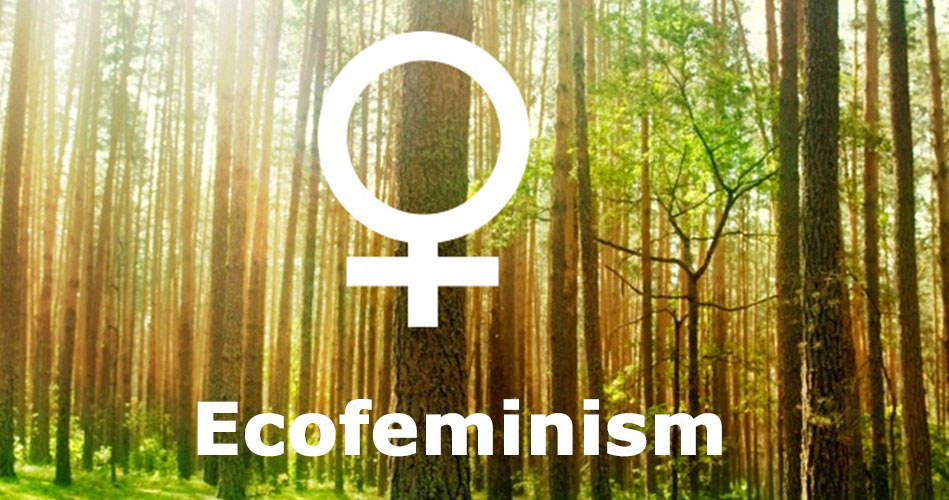When one thinks of Eco-Feminism in India, one’s mind directly goes to Dr. Vandana Shiva, a leading eco-feminist, and one of the most radical women in the field of science. As a physicist and an activist, she has brought together the worlds of science and social activism. Her leading work, “Staying Alive” brings out the trajectory of the process of development, intertwined with concepts of masculinity and femininity. The book finds its relevance today because the world is going through many changes in the name of development, and women have only very recently been recognized as bearers of said development, and not just victims of it. This article seeks to dig deep into the book, to understand the nuances of environment, development, and progress in India, through the eyes of Dr. Shiva.
The recurrent thought that is essential to the book is the antagonism towards the Western, scientific underpinnings of development, which she calls “reductionism”. With the move to a reductionist model of development, according to Shiva, meant further suppressing voices of the already marginalized women, along with turning nature into something passive. Shiva creates a link between the violation of nature and the violation of women under the development regime. She also believes that the rise of science and technology has resulted in exploitation, especially of women. Thus, through her book she propagates the idea of harmony and sustainability as an ecological path to development for the survival of men and women, along with for the “liberation” of the nature.
Through this book, it is obvious that Shiva stands for the Women in Development approach rather than the Women and Development approach. She believes that development as a western concept is inherently masculine, superimposed on women and the originally-feminine nature. This makes her believe that the entry of women’s experiences and opinions within the masculine developmental framework would prove to be better, in terms of inclusivity. This would, in turn, result in the restoration of femininity within the framework which focuses primarily on the masculine.
It is also extremely interesting to take note of Shiva’s views on the water situation in India. She calls women the “water providers”, and thus believes that it is women who face most problems with the shrinking water resources in the country. Here, too, she reiterates her antagonism towards reductionism by stating it to be the root of the water problem that India, and in turn women face. Science and technology, since the beginning, have controlled water as though they are its producers. What science and technology haven’t given enough recognition to is the fact that humans are part and parcel of the water cycle, and thus their activities have a strong influence on the availability of it. Therefore, Shiva believes that violence towards water is the most problematic of all, especially because it threatens the existence of all things living.
Shiva then goes on to highlight the role that religion has to play in the conservation of rivers. She illustrates this by giving an example of a festival celebrated in South India called the Bhim Ekadashi, where the villagers gather to cleanse the river and de-silt the field channels. Even though the act is religious, it has positive impact on the water resource that the villagers depend on. Even the East Indian Company used indigenous ways to deal with water problems. However, since independence and the introduction of the development plans, humans have been trying to control the flow of rivers through dam-building, which Shiva calls an epidemic that took over India. We can observe the undercurrent of development as masculine even while Shiva talks about water, as she critiques the current systems of irrigation and dam-building, which she believes are extravagant and large, used by capitalist farmers.
Even though Dr. Vanadana Shiva’s Staying Alive gives us an insight into the enforcement of a western and inherently masculine development regime in a culture where nature was considered to be feminine, and the problems that came along with it, it also easily assumes that the condition of women pre-development was better. Shiva blames development for the injustices and violence that women face on the process of development, which may be misguiding. This easy assumption may be challenged, especially since she does not trace the history of the struggle, but simple starts from the beginning of scientific developments in the West. Also, in talking about reductionism which makes the development regime faulty, she never once clearly defines her understanding of the term, and does not mention the kind of reductionism she is talking about, whether methodological, theoretical, or ontological.
Another critique of the book, especially when referring to the part which talks about development in terms of water, could be about the emphasis it lays on religion having to play a major role in the conservation and management of water bodies. On the flip side, it has been noted that various religious activities have, in fact, caused water pollution. According to a report on the Ganges river by Harvard, even though Ganges or Ganga is the most revered water body in the Hindu religion, so much so that a drop of its water can undo sins, it has become one of the most polluted rivers in the country. The Hindus believe that since Ganga can wash away their impurities and sins, she can also cleanse herself when needed, rendering all cleaning drives useless. Along with this, Hindus partake in many activities which involve the water, such as submerging of various idols in flowing water, all of which gives us an insight into how religion can also be a deterrent to water management.
A sneak peek into Shiva’s radicalism can be taken from her absolute rejection of the masculine, an undercurrent that runs throughout her book. However, she doesn’t really question the duality of masculinity and femininity; neither does she question the inherent attachment of femininity to the nature, which has been a point of contention for feminists throughout the ages, starting from Sherry Ortner in 1972. Thus, Staying Alive, a primer to Indian Eco-feminism is a great read for those starting out in understanding the interrelation between gender and environment, and allows us to create a discourse within this intersection, even though it comes with its flaws.
References:
1) Shiva, V. (1988), Staying Alive: Women, Ecology, and Survival in India. Kali For Women.
2) Harvard Divinity School (2018), Hinduism Case Study – Climate Change. Religious Literacy Project, Harvard University.
3) Ortner, S. (1972). Is Female to Male as Nature Is to Culture? Feminist Studies, 1(2), 5-31. doi:10.2307/3177638





